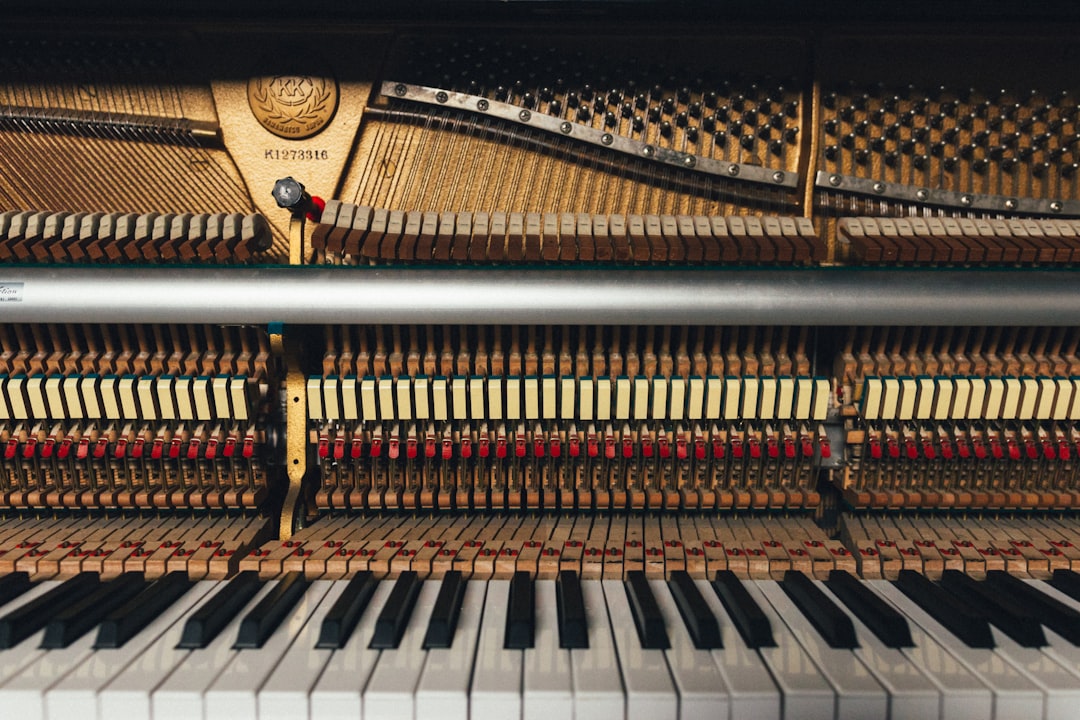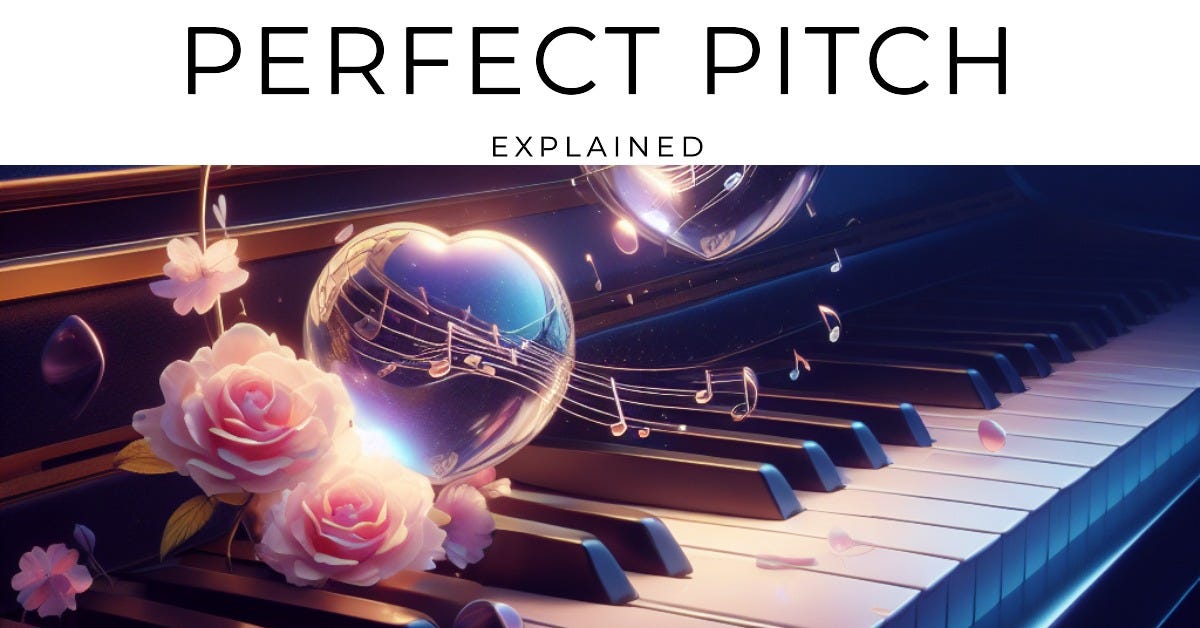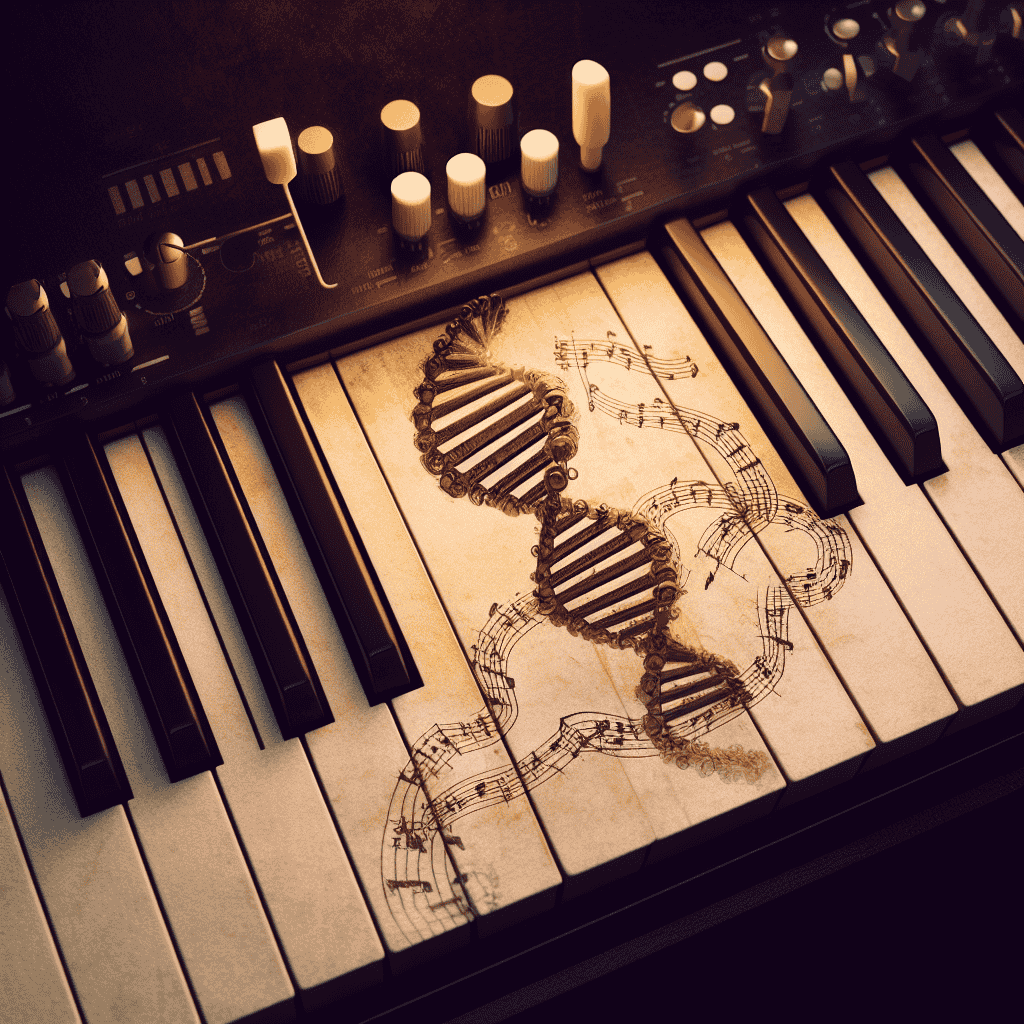Perfect Pitch: Complete Explanation
Perfect pitch, also known as absolute pitch, has fascinated musicians, scientists and music lovers for centuries.
This rare ability allows someone to instantly identify or reproduce a musical note without any reference point. Possessing perfect pitch is often seen as an indicator of inborn musical giftedness.
Famous composers like Mozart and pop stars like Mariah Carey are just some examples of musicians who are believed to have perfect pitch. It's an aura of mystery surrounds this unusual talent.
By some estimates, only about 1 in 10,000 people have genuine perfect pitch.
But what exactly is it, and what causes someone to develop this ear for absolute notes?
Scientists have been researching these questions around perfect pitch for decades, but many mysteries remain. The study of perfect pitch has broader implications too, providing insights into human cognition, auditory processing, and neuroplasticity. As we deepen our understanding of perfect pitch, we may find this ability is more learnable than once thought.
What is Perfect Pitch?
Perfect pitch, also known as absolute pitch, refers to the ability to identify or reproduce a musical note without any external reference. For example, when someone with perfect pitch hears a C sharp played on the piano, they can name the note as C sharp without seeing which key was played.

They have no need for an external starting reference like comparing it to a tuned A note at 440hz. Likewise, someone with perfect pitch may be able to sing a specific note, like an F, upon request without having recently heard the note. This contrasts with relative pitch, where notes are identified based on their relation to other notes, rather than their absolute value.
Those with only relative pitch can still possess excellent musical ears in terms of detecting intervals and changes, but they cannot label notes independently of context.
An easy way to understand the difference is imagining a situation where a song is played in a different key from the original. Someone with perfect pitch would immediately recognize that while the melody and intervals are consistent, the underlying notes themselves have shifted up or down in frequency.
On the other hand, someone with only relative pitch may not detect this change, since the relationships between notes remain constant when a song is transposed into another key. Interestingly, research suggests the ability to identify absolute pitches may be latent in everyone from birth, but becomes harder to access later in life as relative pitch takes over.
It's worth noting that perfect pitch is distinct from simply having a "good musical ear." Possession of perfect pitch does not necessarily dictate musical talent or ability. There are professional musicians with superb playing and listening skills who do not possess true perfect pitch.
Conversely, there are people who have perfect pitch but limited musical training and ability to name identified notes.
What perfect pitch provides is more narrowly focused - the ability to assign labels and meaning to heard frequencies based on their absolute values.
Parallels can be drawn with absolute senses like color vision. We don't need a reference color to identify an object as red or green. Those with perfect pitch have similar sensory recognition and memory for the absolute values of musical pitches.
Prevalence of Perfect Pitch
How common is perfect pitch? Estimates vary, but most authorities suggest perfect pitch occurs naturally in only about 1 in 10,000 people within the general population.
However, its prevalence is significantly higher among musicians. Studies indicate 1-11% of professionally trained musicians possess absolute pitch, equating to anywhere from 100-1100 out of every 10,000 musicians.
Perfect pitch appears to run in families, implying a potential genetic component. However, even among identical twins where genetics are identical, perfect pitch abilities can differ. This points to environmental and developmental factors being important as well.
Nurture as well as nature is likely required for perfect pitch to fully manifest. Certain populations show higher incidences of perfect pitch that may shed light on its origins.
For example, musicians who speak tonal languages like Mandarin demonstrate higher rates of perfect pitch compared to English speakers. In tonal languages, pitch patterns differentiate word meanings rather than just conveying emotion.

One study found 60% of Mandarin-speaking music students who began training before age 6 exhibited perfect pitch, compared to just 14% of English-speaking students. This suggests learning pitch patterns and meanings in language from an early age could aid pitch identification abilities. However, language exposure alone does not appear sufficient; early music training also seems necessary to develop perfect pitch.
Links to perfect pitch have also been found in individuals with autism spectrum disorders. Multiple studies have shown autistic children perform better at identifying and remembering pitches compared to neurotypical children. Understanding this connection may provide clues into the neurological and genetic basis of perfect pitch.
The brains of those with perfect pitch also reveal measurable differences, with greater grey matter density in areas governing auditory processing.
Overall, while perfect pitch appears tied to both genetic predispositions and developmental environment, it remains a rare phenomenon. Estimates are that just 0.0001% of the general public possess it. Yet curiously, having perfect pitch may make it harder to understand what not possessing it is like, similar to someone with normal color vision trying to grasp complete color blindness.
The exact prevalence remains difficult to pinpoint, as many with perfect pitch abilities may be unaware or unable to articulate having this gift.
Carefully designed studies are still needed to illuminate the full scope of perfect pitch occurrences in the population.
Is Perfect Pitch Genetic?
The origins of perfect pitch remain something of a scientific mystery. However, certain clues point to genetics playing at least some role in the likelihood someone will develop this ability. For one, perfect pitch tends to run in families – someone with a close relative possessing perfect pitch is statistically more likely to have it themselves compared to the general population. This implies that genetic factors increase the odds of acquiring perfect pitch.
However, genetics cannot fully explain perfect pitch abilities on their own. Evidence for this comes from studies of identical twins, who share 100% of their DNA.
Identical twins often demonstrate uncanny similarities in traits and abilities due to their genetic uniformity. Yet remarkably, identical twins do not always share perfect pitch capabilities – one twin can possess superb pitch identification while the other does not. Since their genes are identical, the discrepancy implies that environmental and developmental influences also affect perfect pitch acquisition apart from genetic background.
Rather than there being a single “perfect pitch” gene, current theories propose that a combination of genes related to cognitive functions like working memory and auditory processing increases susceptibility.
Possessing greater neural plasticity or density in brain regions governing pitch perception may also make early training more effective in solidifying absolute pitch associations. In essence, a latent physiological potential to develop perfect pitch may be realized through exposure to opportune environmental training and musical immersion during critical developmental windows.
Ultimately, perfect pitch likely arises through a confluence of innate talents and learned skills. Genes may bestow a heightened predisposition, but practice and experience appear vital to crystallizing this potential into an absolute perception of pitch.
Modest evidence that targeted training can improve pitch recognition accuracy in some adults without perfect pitch also argues against purely genetic determinism. Perfect pitch ability probably exists along a spectrum influenced by both nature and nurture.
Though exceptionally rare, it reminds us that with the proper conditions, our brains can accomplish extraordinary things. Unraveling the puzzle of perfect pitch may uncover secrets of maximizing human potential.
Historical Views on Perfect Pitch
For much of history, perfect pitch was regarded as an immutable ability that depended on nailing down absolute pitch associations during a "critical period" in early childhood. The common belief was that if perfect pitch was not acquired by age 6 or 7, it simply could not be learned later in life. This aligned with broader theories of childhood development that assumed sensory and cognitive skills could only be gained within narrow time windows.
Attempts to teach perfect pitch to older children or adults were deemed fruitless. The notion that genes predetermined perfect pitch took hold as well. You either were born with the gift, or not. This contributed to a mystique around perfect pitch as a special, un-replicable talent.
Starting in the late 20th century, a few studies challenged the critical period hypothesis. In the 1980s, experiments using a drug called valproate to “re-open” neural plasticity had partial success teaching pitch identification skills to adult non-musicians. But full-proof perfect pitch remained elusive. In the 1990s and 2000s, a series of innovative studies at the University of Chicago began more rigorously testing the trainability of perfect pitch in adulthood.
Researchers including Howard Nusbaum and Shannon Heald utilized specialized training programs that showed rapid improvements in pitch accuracy for adult participants.
Their work provided initial evidence that even if difficult, certain aspects of perfect pitch could be gained with practice by some later in life. Using brain imaging, they also found neural networks associated with pitch processing were amenable to reshaping through experience.
This research has overturned the notion that perfect pitch is an innate talent fixed at birth and cast doubt on the existence of rigid critical periods. Instead, it illustrates that sensory and perceptual skills show greater neuroplasticity through life than previously recognized.
Perfect pitch ability likely relies on a confluence of inborn cognitive talents and active environmental learning - an interaction of nature and nurture. Though much mystery around its origins remains, perfect pitch is proving to be less immutable than historically depicted.
Can You Learn Perfect Pitch as an Adult?
For most of history, researchers doubted that perfect pitch could be acquired after childhood. The conventional view held that there is a "critical period" for learning absolute pitch that ends around age 6-9 years old. Any training attempts later than this predetermined window were assumed futile. Perfect pitch was seen as so inborn and fixed that trying to obtain it in adulthood was hopeless.
However, pioneering work by auditory scientists like Dr. Howard Nusbaum at the University of Chicago has upended this stagnant orthodoxy. His studies and others demonstrate that aspects of perfect pitch can in fact be gained to varying degrees in adulthood.
Though no quick and easy path exists to achieve the level of lifelong possessors of perfect pitch, adults can make meaningful improvements.
In one study, participants across a wide range of musical backgrounds underwent a 5-week computer-based training program. This used exercises like associating pitches with colors, identifying pitches played alone or in melodies, and actively vocalizing target notes. After just 8-10 hours total of training, average pitch naming accuracy jumped from 50% to over 85% for piano tones. Moreover, these gains persisted months later. Brain scans showed rapid remodeling of neural networks for pitch processing as well.
Other research finds that immersion in musical activities can strengthen pitch awareness in adults not considered to have perfect pitch. For example, choristers singing the same part every week develop a robust mental template for those pitches.
Additionally, functional MRI studies reveal adult musicians show partial activation of brain regions for pitch identification even when not consciously labeling pitches. This hints at latent perfect pitch abilities that musical training may coax out.
Together, these findings suggest certain adult training approaches can significantly sharpen pitch recognition skills. Possible methods include:
Online ear training games for associating notes with colors or instruments
Daily listening exercises focused on identifying isolated pitches
Joining community chorale groups and paying attention to vocal pitches
Using reference pitch sources like a tuning fork
Working with a music teacher on singing specific pitches upon request
Maintaining consistent daily music practice routine
While true perfect pitch comparable to that of childhood learners remains difficult if not impossible for most adults, current evidence clearly demonstrates adults can improve their pitch identification accuracy.
With diligence and the right training techniques, you can teach an old brain new tricks. Perfect pitch ability, even if not to prodigy levels, is more within adult reach than previously thought. The doors to development never completely close.
Famous Musicians With Perfect Pitch
While a very rare ability in the general population, perfect pitch seems to occur more frequently among famous composers, musicians and singers. Speculation abounds about historical musical greats who supposedly had perfect pitch, which often features prominently in biographies and lore surrounding esteemed musicians.
However, historical diagnoses of perfect pitch should be viewed cautiously since subjective anecdotes and legends rather than objective assessments typically form their basis.
Nevertheless, a significant number of prominent musicians across the classical, jazz and pop genres are strongly believed based on accounts of their lives to have possessed perfect pitch. Examples include:
Classical composers: Mozart, Beethoven, Chopin, Handel
Jazz singers: Ella Fitzgerald, Nat King Cole, Bing Crosby
Pop/rock stars: Mariah Carey, Michael Jackson, Jimi Hendrix, Yanni
Modern musicians: Charlie Puth, John Legend, Lorde
While tempting to attribute their musical gifts partly to perfect pitch, possession of perfect pitch alone does not guarantee success or talent. There are many professional musicians and composers with highly respected abilities but no perfect pitch, as well as amateurs who have perfect pitch without high-level skills.
Other traits like creativity, emotional expressivity, determination, and sheer hard work matter just as much if not more for musical excellence.
Still, accounts of famous musicians with perfect pitch reveal how they leveraged this ability:
Identifying chords and notes to aid composing melodies
Detuning instruments and detecting intonation issues
Discerning overlapping tones and harmonic complexity
Transcribing music accurately after one listen
Easily performing music in any key
Singing requested pitches instantly with precision
While perfect pitch alone cannot make a virtuosic musician, it may confer certain advantages when combined with motivation and talent. But for every famous musician with perfect pitch, there are many equally skilled artists without this absolute pitch sense. Perfect pitch remains a fascinating but not strictly necessary ingredient for musical greatness.
Relative Pitch vs. Perfect Pitch
While revered, perfect or absolute pitch is not necessary for skilled musicianship. Rather, most musical experts possess excellent relative pitch - the ability to discern relationships between notes rather than assign absolute values to each pitch.
Relative pitch allows musicians to identify intervals, harmony, and melodic contours. This aids playing by ear, composing, arranging, and improvisation. Enhanced relative pitch rather than perfect pitch is the more useful skill for musicians.
In contrast to those with perfect pitch who think in absolute note values, musicians with finely-honed relative pitch process music more relationally. For example, they may recognize a melody as ascending a major sixth without needing to identify the starting note as F sharp.
This flexibility with relative pitch can allow easier transposition into other keys and performance in non-standard tunings. Those with ingrained absolute pitch associations can struggle more with transposition or playing pieces in keys other than the original.
Another contrast is that musicians with relative pitch can still detect when music seems out of tune or a wrong note is played based on violations of expectancy.
However, they cannot necessarily pinpoint that a song is in E flat instead of its original key of C major. In this way, relative pitch confers musical advantages while avoiding some of the drawbacks of rigid absolute pitch.
Ultimately, while absolute pitch is an intriguing novelty, musicians rely more heavily on robust relative pitch. Perfect pitch is like having a pitch name stamp for each note, while relative pitch perceives the flexible relationships between notes.
Though an amazing feat of auditory processing, perfect pitch rarely aids practical music-making goals as much as versatile relative pitch recognition.
Perfect Pitch and Tonal Languages
An interesting relationship has been observed between speaking tonal languages and incidence of perfect pitch. In tonal languages like Mandarin, Cantonese, and Vietnamese, pitch patterns differentiate word meanings. The same word pronounced in different pitches conveys distinct semantic information. This contrasts with non-tonal languages like English where pitch indicates emotion and emphasis rather than core meaning.
Studies reveal a higher prevalence of perfect pitch among native tonal language speakers who begin musical instruction before age 6. It is hypothesized that learning to recognize pitch variations as linguistically meaningful may establish neural pathways beneficial for pinpointing musical pitches. However, tonal language exposure alone does not appear sufficient; early music training also seems crucial for activating and cementing absolute pitch perception. In essence, the language of music builds upon foundations laid by verbal language tonality.
This relationship highlights the interplay between environmental immersion and cognitive development in sculpting abilities like perfect pitch. Certain innate capacities may interact with experiential factors to crystallize extraordinary talents. While correlations between tonal language background and perfect pitch are noteworthy, this musical gift ultimately depends on a convergence of nature and nurture.
Perfect Pitch, Autism and Neuroscience
Intriguing links between perfect pitch and autism spectrum disorders have provided clues into the neurological underpinnings of absolute pitch. Several studies have shown autistic children demonstrate enhanced pitch perception and memory compared to non-autistic peers. This overlap points to shared cognitive phenotypes and biological pathways.
For example, higher sensory sensitivity in autism may engender greater attention to subtle pitch details. Denser gray matter in auditory cortical regions could also play a role for those with autism and perfect pitch alike. Discerning whether such brain differences are developmental or inborn remains a challenge however. Unraveling gene variants associated with autism may shed light on genetic contributions to absolute pitch as well.
Ultimately, while correlational evidence is compelling, much remains unknown regarding the precise neural mechanisms of perfect pitch. Dedicated research examining brain imaging, genetics, and auditory neuroscience among those with perfect pitch of varying levels could paint a fuller picture. Studying those rare individuals who acquire perfect pitch later in life compared to childhood possessors may further disentangle nature and nurture components.
The quest to understand perfect pitch is also part of a broader effort using neuroscience techniques to capture the biological foundations of human skills like music cognition. Mapping neurological distinctions linked to rare abilities can inform models of brain plasticity, specialized learning, and developmental windows. Though a puzzling phenomenon, perfect pitch provides a window into the exceptional possibilities of human auditory processing under optimal circumstances.
Perspectives on Perfect Pitch
The rarity of perfect pitch has imbued this ability with intrigue and mystique. Auras of inborn musical giftedness surround child prodigies possessing perfect pitch. However, environmental circumstances and training play pivotal roles in manifesting potential too. While undeniably remarkable, perfect pitch should not be romantically overvalued as sheer genius.
Judgment of musical excellence should emphasize passion, dedication, creativity and emotional connection over isolated technical abilities. Beyond novelty appeal, perfect pitch by itself contributes little to artistic merit or expression. Music appreciation means respecting achievements stemming from hard work and practice more than inborn gifts.
Another balanced perspective acknowledges that absolutes like perfect pitch represent just single points along wider spectra of cognitive competencies. For example, pitch memory capabilities likely range gradationally rather than categorically among the population. Similarly, a mix of genetic blessings and intense cultivation might generate extraordinary talents. Musical skill ultimately blooms from nurturing human potential, not treating ability as predetermined.
Perfect pitch remains a fascinating, if rare, human ability that has garnered scientific curiosity for decades. While historically considered an inborn and fixed trait, emerging research reveals meaningful malleability through targeted learning, even into adulthood. A complex interplay between genetic predispositions, early environment, and neuroplasticity likely determines its manifestation. Though some ambiguity persists, perfect pitch provides broader insights into the origins of human talents and the possibilities of cognitive development across the lifespan. More important than obsessing over isolated special abilities is nurturing passion, dedication, and access to music education so that people of all backgrounds can achieve musical excellence.
While perfect pitch stands out as statistically uncommon, it is just one variation along a spectrum of capabilities cultivated through the convergence of biological potential and purposeful striving. With such optimal circumstances, the boundaries of human achievement prove wonderfully fluid.
Other Studies:
https://news.uchicago.edu/story/acquiring-perfect-pitch-may-be-possible-some-adults




